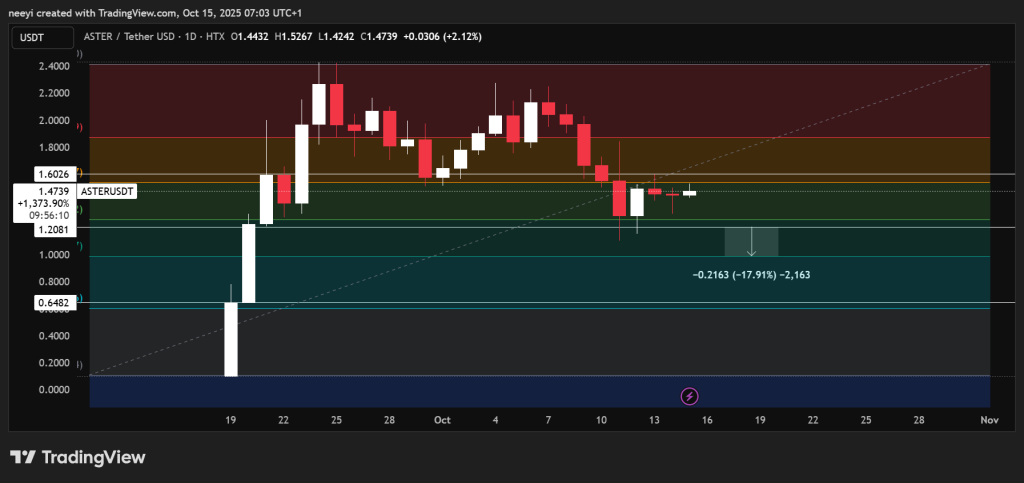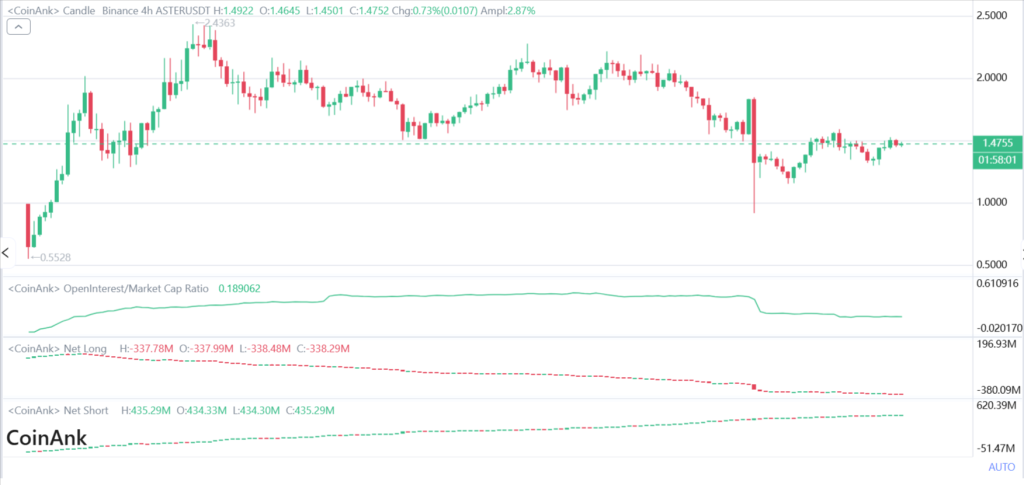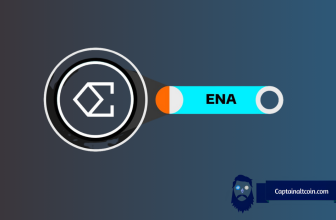
After over 1,000% rally in September, many traders could wonder where Aster (ASTER) price might be heading next. The token, which soared from around $0.25 to over $2.4 in just weeks, has since cooled off. The pullback shows that ASTER is no longer running on pure hype but rather finding its footing after an explosive start.
Aster (ASTER) is a decentralized exchange that lets users trade both spot and perpetual contracts across major blockchains like Ethereum, BNB Chain, and Arbitrum. It was formed in 2024 after a merger between Astherus and APX Finance. Supported by YZi Labs, formerly Binance Labs, Aster aims to deliver one of the most user-friendly trading experiences in DeFi with up to 1001x leverage and two modes, Simple and Pro.
Its ecosystem uses the ASTER token for governance, trading fee discounts, and staking rewards. The team also plans to launch Aster Chain, a Layer 1 blockchain focused on privacy and faster trade settlement. This innovation has earned Aster a strong following, though recent price swings suggest the market is adjusting after its big September breakout.
What you'll learn 👉
ASTER Price Performance and Key Levels
From a high of about $2.4, ASTER price has dropped roughly 40% to around $1.46. Despite the decline, the chart still shows signs of stability. The token has tested the $1.2 level multiple times and held firm since late September. That area now stands as an important support zone.

If ASTER fails to hold that line, a deeper slide toward $0.9 or even $0.6 could follow. The $0.6 area aligns with the 0.786 Fibonacci retracement level, a region that often attracts buyers in cooling markets. On the upside, resistance lies near $1.6, while another barrier sits around $1.86, both levels identified by the Fibonacci map.
In other words, ASTER appears to be consolidating in a wide range between $1.2 and $1.6 while waiting for a breakout trigger.
ASTER Token Unlocks and Sell Pressure Risk
Market data from CoinMarketCap shows that Aster’s upcoming token unlock could bring short-term turbulence. Around 320M ASTER tokens, or roughly 4% of the total supply, will be unlocked on October 20 as part of its Stage 3 airdrop. In past unlock phases, similar events have caused brief sell-offs as recipients cashed out their free tokens.
Only about a quarter of the total 8B ASTER supply is currently circulating, which means more unlocks could add selling pressure in the coming months. If many holders choose to sell after October 20, the price might revisit the $1.25 to $1.35 support area before finding stability again.
Whale Shorting and Market Sentiment Around ASTER
Whale behavior also shapes near-term trends. Data shows over $98M worth of short positions placed on ASTER, with some large traders using Bitcoin and Ethereum pairs to hedge exposure. This reflects cautious sentiment in a market that is still digesting recent gains.
Even so, Aster’s trading activity remains high. The token’s 24-hour volume hovers around $1.4B, with strong liquidity and steady participation. If buyers step in around the upcoming unlock or if the market sees a short squeeze, ASTER price could rebound sharply toward the $1.6 resistance area.
Product Growth and Aster Long-Term Outlook
While short-term traders focus on the price, developers are busy building. The coming launch of Aster Chain is expected to make on-chain trading more private by hiding open position sizes. This could reduce front-running and appeal to professional traders who prefer discreet execution.
Aster also offers some of the lowest fees among perpetual DEXs, 0.035% for takers and 0.01% for makers, and supports multiple blockchains. However, it faces competition from giants like Hyperliquid, which holds about 30% of the perpetual DEX market. For Aster to sustain its momentum, adoption must grow faster than its token supply.
What the Indicators Reveal About ASTER Price
Data from CoinAnk paints a picture of a consolidating market. The Open Interest to Market Cap Ratio stands at 0.189, which shows moderate speculative activity. This ratio suggests traders are active but not overly leveraged, indicating balanced positioning.

The Net Long position sits around -337.99M, while the Net Short position is near 434.33M. That imbalance shows slightly more short exposure than long, aligning with the cautious tone seen across the crypto market. However, both lines are moving almost flat, meaning traders are neither adding big new shorts nor opening aggressive longs.
This pattern usually signals a period of consolidation where the price trades sideways as the market waits for new catalysts. If trading volume increases around the token unlock or Aster Chain update, volatility could return quickly.
Read Also: Expert Says XRP Price Is Repeating Its Most Bullish Pattern – Here’s What That Means
Over the next two weeks, ASTER price will likely move within its established range while the market watches how the October 20 unlock plays out. A strong bounce from $1.2 support could confirm accumulation, while a drop below that zone might open the path toward $0.9 or $0.6.
For now, the charts and indicators show a market catching its breath, consolidating, adjusting, and preparing for its next big move.
Subscribe to our YouTube channel for daily crypto updates, market insights, and expert analysis.








